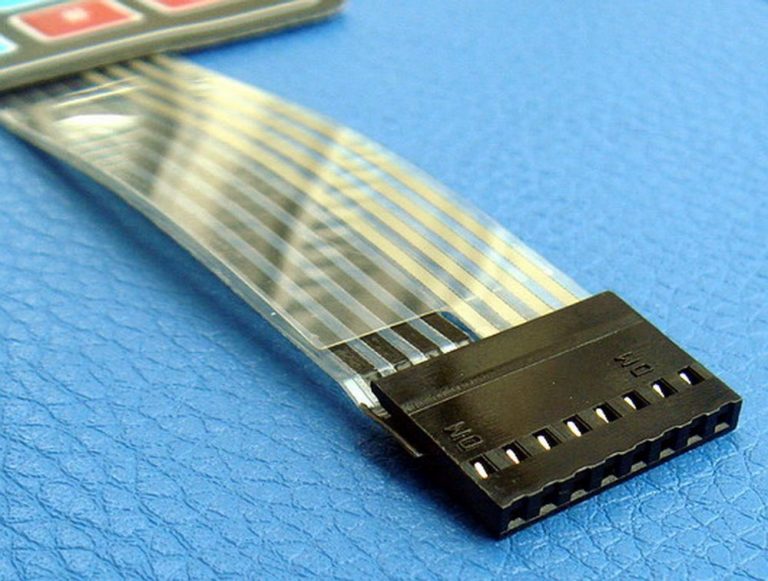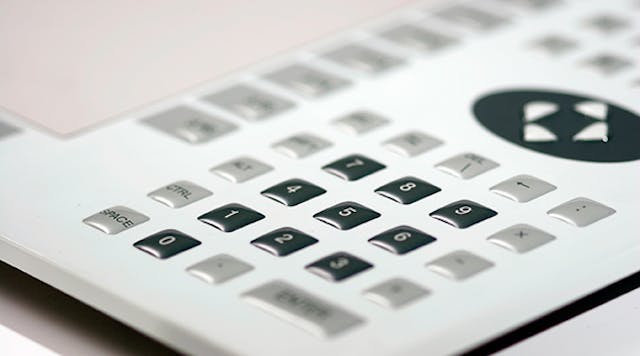Find Out How Membrane Switches Support Touch-Sensitive Applications with Precision
Find Out How Membrane Switches Support Touch-Sensitive Applications with Precision
Blog Article
Membrane Layer Switches Explained: A Comprehensive Guide to Their Advantages
Membrane layer switches represent a advanced and versatile option for producing individual interfaces across a selection of markets. As industries progressively seek efficient and reputable control interfaces, comprehending the certain benefits and applications of membrane layer switches over becomes vital.
What Are Membrane Layer Switches?

When stress is applied to the membrane button, the layers make contact, completing an electric circuit. This straightforward mechanism permits a variety of applications, from consumer electronics to commercial equipment. Membrane layer switches are commonly developed to be immune and water-proof to dust and pollutants, making them ideal for environments where durability is vital.
Furthermore, the adaptability of the products made use of in membrane layer switches helps with ingenious layouts that can comply with numerous shapes and dimensions. This versatility contributes to their popularity in diverse fields, consisting of medical gadgets, vehicle controls, and home devices. Generally, membrane layer switches stand for an essential element in modern interface innovation, bridging the gap between users and digital systems.
Key Advantages of Membrane Layer Buttons
Amongst the myriad of individual interface alternatives available, membrane layer switches over attract attention for their one-of-a-kind mix of advantages. One of the key advantages is their small and lightweight layout, which permits assimilation right into a large range of gadgets without adding considerable mass. This is especially beneficial in applications where space is limited.
Additionally, membrane switches over deal longevity and resistance to ecological factors. They are generally constructed with products that can endure dampness, dust, and numerous chemicals, making them appropriate for harsh problems. This sturdiness contributes to a longer lifespan contrasted to conventional mechanical buttons.
One more substantial advantage is the convenience in personalization. Membrane switches can be published with different graphics, shades, and structures, permitting tailored layouts that meet particular branding or functional demands. This flexibility reaches the variety of layers and circuit choices, offering engineers with several arrangements.
Moreover, the responsive feedback supplied by some membrane layer changes boosts user experience, making them much more intuitive to run. The ease of cleaning and maintenance additionally strengthens membrane layer switches as a useful option in both customer and commercial applications. Generally, these essential benefits make them a recommended solution for numerous designers and producers
Applications in Numerous Industries
Exactly how do membrane layer buttons locate their location throughout diverse industries? Their adaptability and performance make them indispensable parts in sectors ranging from healthcare to consumer electronics. In medical tools, membrane layer buttons are made use of for their convenience of cleansing and resistance to contamination, ensuring hygiene in atmospheres where sterility is essential.
In the customer electronics sector, these switches provide sleek, user-friendly interfaces that enhance item looks while keeping longevity versus damage. Automotive applications benefit from membrane layer changes as well, where they are used in control panels and control board, offering dependable performance in tough problems.
Furthermore, industrial machinery employs membrane layer buttons for control panels as a result of their effectiveness, capacity to stand up to extreme atmospheres, and customizable layouts that satisfy particular operational demands. The food market leverages membrane layer buttons for their simplicity of use and resistance to spills, guaranteeing functional efficiency in busy setups.
Inevitably, visit the website the versatility of membrane layer changes across these diverse applications underscores their essential duty in contemporary innovation, improving individual interaction while fulfilling industry-specific demands. Their proceeded development guarantees further integration right into arising fields and cutting-edge items.
Layout and Customization Alternatives
The design and personalization alternatives available for membrane layer buttons are important for customizing interfaces to satisfy certain customer needs and aesthetic choices. These buttons can be developed in various shapes, dimensions, and formats, enabling smooth combination into diverse applications. The versatility in layout means that makers can produce one-of-a-kind interfaces that improve functionality and keep brand name identification.
Custom shades, structures, and graphics can be related to the surface of the membrane switch, offering a chance for branding and individual interaction. In addition, backlighting alternatives, such as LED lighting, can be included to boost exposure in low-light problems, hence boosting capability.
Useful components can likewise be personalized, consisting of responsive comments and actuation pressure, which can be readjusted to match various individual communications. The selection of materials, such as polyester or polycarbonate, enables variants in sturdiness and environmental resistance, satisfying the certain needs of different sectors.
Inevitably, the extensive layout and customization capacities of membrane layer buttons allow companies to produce easy to use and visually attractive interfaces, making certain that their items satisfy both practical and visual demands successfully. Membrane Switches.
Considerations for Implementation
Applying membrane changes calls for careful consideration of numerous variables to guarantee optimal capability and individual try these out experience. Aspects such as direct exposure to moisture, severe temperatures, and chemical materials can dramatically impact the switch's efficiency and durability.

One more vital aspect is the switch's design and design. Ensuring that the responsive responses and actuation force straighten with user expectations boosts use. Conducting customer testing can give beneficial insights into the ideal style.
Furthermore, compatibility with digital parts have to be analyzed. The button's wiring should line up with the general system architecture, making certain reputable signal transmission and decreasing interference.
Furthermore, production approaches and prices must be examined. The choice in between custom styles and typical models can lead and influence both budget time.
Finally, consider repair and maintenance. Membrane layer buttons may need details cleansing and care procedures to maintain their appearance and capability in time. By attending to these considerations, companies the original source can apply membrane switches that fulfill their operational requirements while supplying a favorable user experience.

Verdict
In verdict, membrane switches represent a durable and functional control user interface ideal for a vast range of applications across several industries. Their compact layout, resistance to environmental elements, and adjustable functions boost user experience while conference specific branding requirements. As technology remains to advance, the importance of membrane layer buttons in modern-day tools continues to be considerable, supplying both functionality and visual allure. Future innovations will likely further increase their applications and effectiveness in various atmospheres.
Membrane layer switches over represent a versatile and innovative option for creating individual interfaces across a range of industries.Recognizing the essential elements of modern electronic user interfaces, membrane switches are a type of individual interface tool that are composed of versatile, slim layers of product. On the whole, membrane layer changes represent a vital component in modern user interface innovation, linking the gap in between customers and digital systems.
Among the myriad of user interface choices offered, membrane switches stand out for their unique combination of advantages.The style and modification options readily available for membrane layer buttons are important for tailoring user interfaces to satisfy specific customer requirements and visual choices.
Report this page